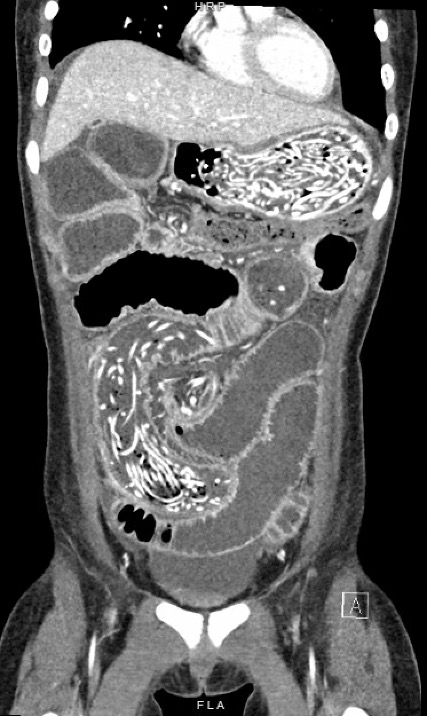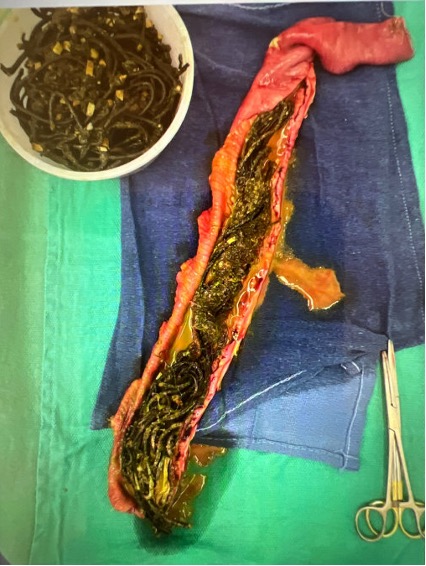Case Presentation: A previously healthy 13-year-old girl presented with chronic abdominal discomfort, significant weight loss (11 kg over 8 months), and hyponatremia in the setting of decreased oral intake. Initial evaluation revealed elevated inflammatory markers, iron deficiency anemia (IDA), and thickened bowel walls on abdominal ultrasound. Then, computed tomography revealed a small bowel obstruction secondary to many coiled dense linear foreign bodies (Figure 1). The patient denied ingestion of any non-food items. However, an exploratory laparotomy revealed volvulus of the ileum and a contained small bowel perforation secondary to innumerable elastic hair ties and headbands within the stomach and small intestine (Figure 2). The patient underwent segmental ileal resection and re-anastamosis as well as gastrostomy with foreign body removal. She was stabilized and discharged with psychiatry follow-up for management of pica as well as iron supplementation for her anemia.
Discussion: Pica is a psychiatric disorder characterized by the persistent eating of nonnutritive, nonfood substances that is neither developmentally nor culturally appropriate.[1,2] Its etiology remains unclear, though there are associations with multiple psychological factors such as stress, child neglect, and abuse, as well as with pregnancy, intellectual disability, and IDA.[2,3] The presentation varies depending on the substance ingested; clay ingestion, for example, can lead to constipation and hypokalemia with myopathy, whereas lead poisoning, with its attendant symptoms, can result from the ingestion of earth, paint chips, and toys coated in lead-containing paint.[2,3] With retained foreign bodies, pica can lead to chronic weight loss, nonspecific gastrointestinal (GI) symptoms, and bowel wall thickening.[4] In these cases, it can be difficult to distinguish pica from more familiar diagnosis such as inflammatory bowel disease (IBD) or Celiac disease.
Conclusions: Pica with retained foreign body can present with chronic weight loss, nonspecific GI symptoms, and bowel wall thickening, similarly to more common GI diagnoses such as IBD or Celiac disease. Especially in conjunction with risk factors such as IDA, intellectual disability, pregnancy, or significant psychological stressors, presentations such as these necessitate consideration of pica and a careful dietary history. Imaging can often clarify the diagnosis prior to pursuing more invasive procedures, such as endoscopy.


